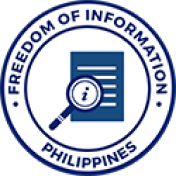• Vaccines differ in their composition and how they trigger the immune response to create antibodies. These antibodies protect the body from microorganisms and serve as protection once a person gets infected with disease. Vaccines can be inactivated, weakened or killed copies of the whole or part of the virus or bacteria, or genetic product (like mRNA vaccines) that creates protein copies without causing disease
-
Oo. Ang dami ng dosis na pwede mo nang matangap ay naka depende sa iyong edad o kalusugan. I-click para sa karagdagang Impormasyon
Para sa mga edad 5-11:
- Dalawang dosis – primary dose series para sa mga edad 12 pataas:
- Tatlong dosis – dalawa para sa primary dose series at isang booster dose para sa mga Healthcare Worker, Senior Citizen, at Immunocompromised:
- Apat na dosis – dalawa para sa primary dose series at dalawang booster dose para sa buntis, nagpapasuso, at may karamdaman

The national government is working in partnership with our local governments to get the vaccines to you. Your local government unit will arrange for the registration and scheduling of vaccination
COVID-19 Vaccination Prioritization Framework
The prioritization framework for COVID-19 vaccination based on the World Health Organization (WHO) Strategic Advisory Group of Experts (SAGE) on Immunization, together with the recommendations of independent bodies of experts including the Interim National Immunization Technical Advisory Group (iNITAG) and the Technical Advisory Group (TAG), was formulated due to the limited global supply of COVID-19 vaccine products. With the guidance of this principle, the Philippine National Deployment and Vaccination Plan formulated strategies and contingencies to ensure the equitable distribution of vaccine products for all Filipinos.
Why do we need to have prioritization?
– To reduce mortality
– To preserve the health system capacity of the country
YES, BUT WITH SPECIAL PRECAUTIONS
• With history of bleeding disorders or currently taking blood thinners
• With allergy to food, egg, or medicine
• With history of asthma
YES, BUT FOR RESCHEDULING:
• Currently diagnosed with COVID-19 or with symptoms of: fever / chills, fatigue, cough, colds, headache, sore throat, myalgia, loss of taste or smell, diarrhea, shortness of breath / difficulty breathing, and rashes
• Has history of exposure to confirmed or suspected COVID-19 case in the past 14 days
• Has received convalescent plasma or monoclonal antibodies for COVID-19 in the past 90 days
• Women in the first 3 months of pregnancy
• Has received any other vaccine in the past 14 days
• Has had attacks, been admitted or changed medications for their co-morbidities in the the past 3 months
• Hypertensive emergency or blood pressure > 180/120 with symptoms of possible organ damage
YES, BUT NEEDS CLEARANCE FROM ATTENDING PHYSICIAN / PRIMARY CARE PROVIDER
• With autoimmune disease
• With Human Immunodeficiency Virus (HIV)
• Cancer patients currently undergoing chemo/radio/immunotherapy
• Underwent transplant
• Currently taking steroid medications4
• Bedridden, in a vegetative state, or poor prognosis with life expectancy less than 6 months
NO
• Less than 18 years old
• Allergy to any vaccine components (e.g. polysorbate, PEG)
• Severe allergic reaction (e.g. anaphylaxis) to first dose of the vaccine
- Inumin ang maintenance na gamot para sa high blood
- Magbaon ng extra na gamot para sa high blood
- Kumain sa bahay, iwasan nang kumain sa vaccination center habang naghihintay
- Mag-relax habang nakapila bago bakunahan
- Panatilihing malinis ang inyong kamay, mag-suot ng face mask at face shield, at obserbahan ang physical distancing habang nasa vaccination center
- Mag-relax at huwag kabahan habang nasa pila
- Huwag uminom ng kape o anumang inumin na may caffeine 30 minuto bago magpa-BP
- Huwag muna kumain
- Huwag manigarilyo
- Umihi muna kung naiihi
- Iwasan uminom ng mga pain reliever o gamot sa sipon na maaaring magdulot ng pagtaas ng BP
- Mag-relax
- Maaaring gawin ang deep breathing exercise sa loob ng 3-5 minuto:
- Inhale sa ilong – 4 counts
- Hold breath – 2 counts
- Exhale through mouth – 4 counts
- Kung wala namang nararamdaman na malubha, maaari nang umuwi pagkatapos ng 30 minuto hanggang 1 oras
- Magpakita sa inyong doktor kinabukasan
- DOH Epidemiology Bureau
- Philippine Food and Drug Administration (FDA)
- National Adverse Events Following Immunization Committee (NAEFIC)
- Regional Adverse Events Following Immunization Committee (RAEFIC)
• Stay at home unless travel is essential
• Open windows and ensure proper ventilation and air circulation at home or your place of work
• Maintain a balanced and healthy diet, exercise, and avoid smoking and alcohol
• Monitor your health and call your Barangay Health Emergency Response Team if you have symptoms AND POSSIBLE EXPOSURE TO THE VIRUS.
- Within 14 days before getting your first dose
- In between your first and second doses
- Before your body had built up the protection from the vaccine
- Any gap in adhering to the BIDA Behaviors and minimum public health standards


